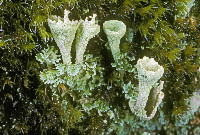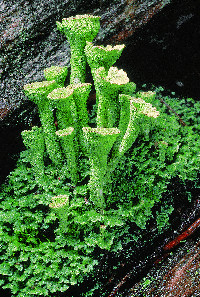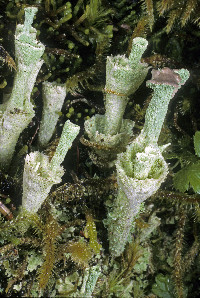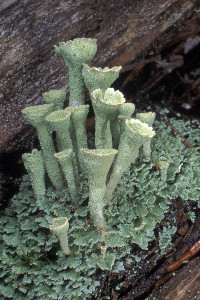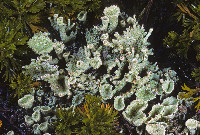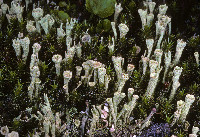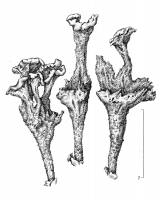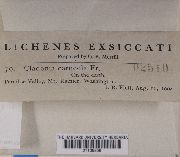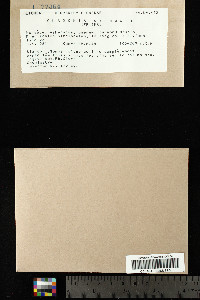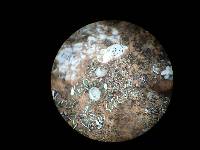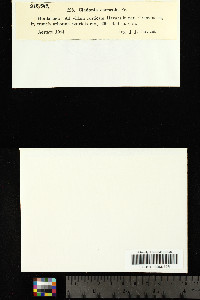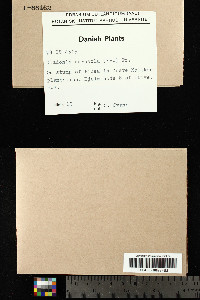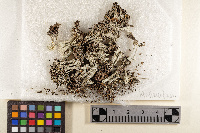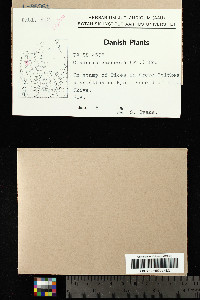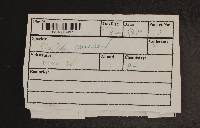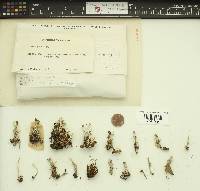
Consortium of Lichen Herbaria
- building a Global Consortium of Bryophytes and Lichens as keystones of cryptobiotic communities -
- Home
- Search
- Images
- Species Checklists
- US States: O-Z >
- US National Parks
- Central America
- South America
- US National Parks
- Southern Subpolar Region
|
|
|
|
Family: Cladoniaceae
Crowned Pixie-cup
[Cenomyce carneola Fr.] |
Nash, T.H., Ryan, B.D., Gries, C., Bungartz, F., (eds.) 2002. Lichen Flora of the Greater Sonoran Desert Region. Vol 1. Primary thallus: squamulose, persistent or evanescent; squamules: 2-3 mm long, 0.5-1 mm wide, deeply, irregularly laciniate podetia: (3-) 5-20 (-50) mm tall, 2-4 mm wide, pale yellow, cup-bearing; cups: 2-9 mm wide, flaring abruptly; margins: dentate surface: corticate at the very base, otherwise farinose sorediate, granulose below cups or on inner surfaces of cups Apothecia: fairly common, 0.5-5 mm wide, pale brown ascospores: fusiform, 12-16.5 x 3.5-5 micro meter Pycnidia: very common, dark brown to black, conical to cylindrical, blunt to somewhat pointed, with hyaline gelatin conidia: 3-4 x 0.5-1 micro meter Spot tests: K-, C- (unless barbaric present), KC+ yellow, P-, UV- Secondary metabolites: usnic acid with accessory barbatic and isousnic acids and zeorin. Habitat and ecology: on rotten conifer wood and acidic humus in moist habitats World distribution: Antarctica, Asia, Europe, North America; South America (south), mainly boreal Sonoran distribution: Arizona, Chihuahua and Channel Islands. Notes: Cladonia carneola is widespread in the western United States. The pale yellow color and P- reaction of C. carneola distinguish it from other sorediate, cup-bearing species. However, specimens with low concentrations of usnic acid appear greenish rather than pale yellow and may be confused with C. pleurota. The pale brown or beige apothecia in C. carneola distinguish it from similar species, but the color may be confused with the darker brown apothecia of species such as C. fimbriata. One useful, but often overlooked character in C. carneola is the regular arrangement of small, usually pointed, black pycnidia along the cup margins. These pycnidia sometimes resemble a corona around the edge of the cup. |
|
|
|
Powered by Symbiota





